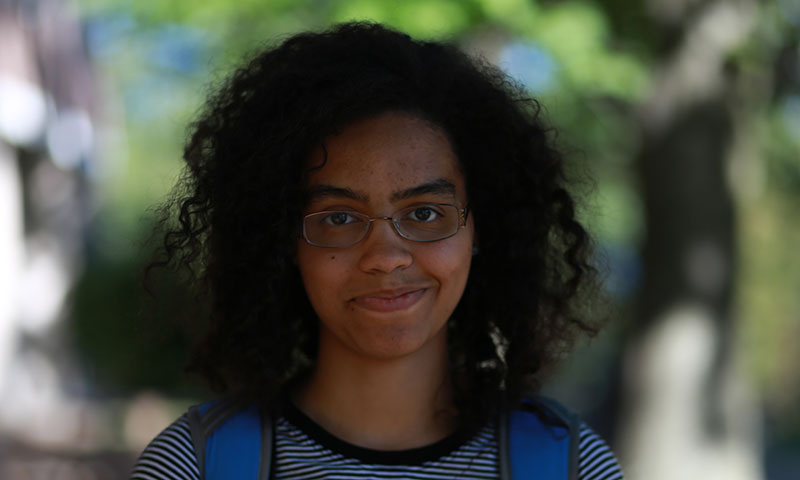Rhayna Kramer '19 is majoring in English and history. In this article, previously published on Odyssey.com, she looks at how skin color affects interactions.
What Mixed Girls May Not Tell You.
It's not just us shedding “light girl tears.”
I get a kick out of sifting through Black Twitter, sprinkling my Facebook timeline with laughing emojis as I share some of the most relatable memes and videos that bring to the surface memories of my childhood. I've heard my mom quip about “McDonald's money” – or “Mickey D's,” as she calls it. I've seen the way our fridge looks like an arctic industrial plant with the amount of foil-wrapped leftovers from Thanksgiving. And I'm almost certain my mom's family has a picture of one of our relatives posing in a wide-backed wicker chair.
Even as the black community has been a source of joy, it has also been the source of a lot of pain for me growing up.
I was vaguely aware, for the first several years of my life, of the fact that I looked different from my white classmates, but knowing this never kept me awake at night. Aside from the occasional comments about my perceived athletic ability in basketball or questions posed out of genuine curiosity, I never experienced much racial prejudice, presumably because many are trained not to “see race.” I could go into the nuances of such a statement, but that is another article for another day. Being from Columbus, Ohio, reportedly one of the most ideal cities for interracial couples, may be a factor as well.
As it happens, it wasn't until I transferred to a predominately black school back in fifth grade that I began to confront an identity crisis, the effects of which still faintly persist even today.
I wish that documentaries like “Dark Girls” and its counterpart “Light Girls” had existed back during this crucial time so that I could've understood the very real phenomenon of colorism – prejudice against those with different (typically darker) skin tones within one's own racial group.
I saw firsthand the way darker-skinned black kids were relentlessly teased, the way they would purposefully struggle to run a comb through the hair of the school's “nappiest” kids in jest. The way one girl was laughed out of the room when she told her friends she wanted to take up ballet. The way people in the lunch line wrinkled up their noses and remarked that an Eritrean student “smelled African.”
I would soon find out that light skin wasn't in either. People constantly questioned my authenticity as a person of color. When meeting new people, “What's your name?” was replaced by “What are you?” as if I were some kind of newly discovered anomaly in the natural world. It was always that I “acted white,” that my skin was too yellow to be brown and that I thought I was better than everyone else.
Many teen girls experience increasingly crippled self-esteem issues in their search for an identity. For people of color, these issues are exacerbated twofold as they struggle to navigate identities through activities divided along a black or white racial binary. Though I'd grown up with very eclectic tastes, I found myself trying to “prove” my blackness by becoming immersed in what I thought was universally black culture.
It wasn't long before I began listening to hip hop (even though I'm not a fan of most hip hop), speaking in dialect, even sunning myself to a burn in an attempt to keep rude comments at bay and gain toxic friends. As a steadfast perfectionist, I continued to perform well academically, but I would sooner die before I verbalized these abilities. Even as I write these words I cringe at the thought of intellectualism and blackness being inversely proportional and mutually exclusive.
I don't voice these sentiments to diminish the very real and systemic bias against dark-skinned people here and around the world. My light complexion still affords me a great degree of privilege that many of my darker-skinned counterparts can only dream of having. I can most likely navigate most streets without being pulled over in a potentially fatal encounter with police, depending on how I wear my hair that day and if I'm following the law to the letter. I probably won't have as much trouble in the dating world since there is a disproportionate preference for light-skinned women.
The most important lesson I've taken away is that there are many different ways to be black in America. Regardless of shade or background, we share an incredible legacy of a strong people who have withstood slavery, Jim Crow, and racial epithets. We have been inventors, business owners, and teachers. It's time for us to find more things in common than more things to divide us.

